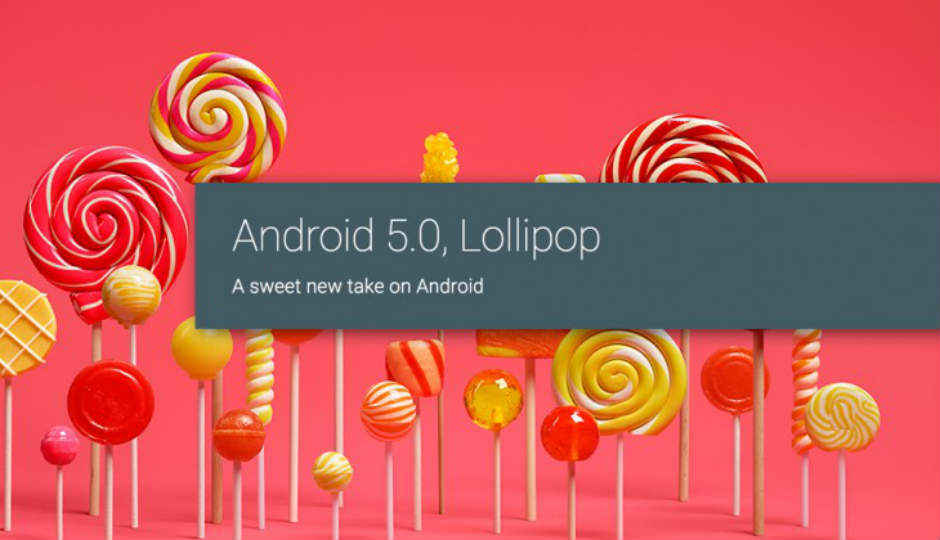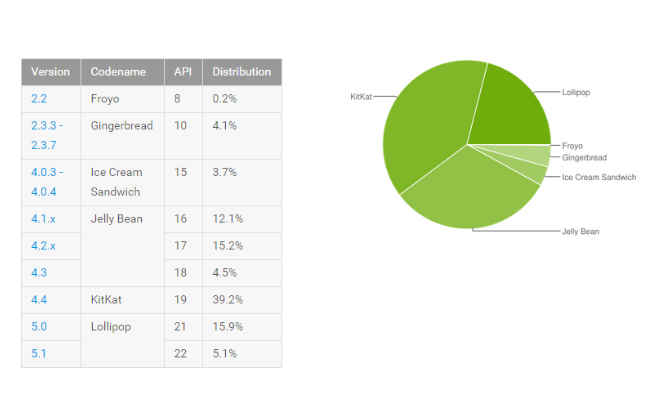Android Lollipop now powers more than 20% Android phones: Google

Despite being around 1 year old, Lollipop continues to show a slow adoption rate, and follows KitKat and Jellybean at 39.2% and 31.8% respectively.
Google has released the latest data on distribution of different iterations of Android OS across devices. As per the data, Android Lollipop is now running on 21% of devices, with 15.9% running on Lollipop v5.0 and 5.1% on Lollipop v5.1. The earlier versions, KitKat (39.2%) and Jelly Bean (31.8%) have seen a slight fall in their share, but are powering considerably more devices than Lollipop. The data was collected during the 7-day period ending on September 7, 2015.
The data was collected on basis of devices with which users visited Google's Play Store. Hence, devices that do not visit the app, like ones in China, were not included while calculating the distribution. The share of other versions put Ice Cream Sandwich (3.7%), Gingerbread (4.1%), and Froyo (0.2%) in diminishing percentage of Android OS' versions. The data by Google does not show any version that has a share of less than 0.1%.
Android Lollipop was released last year, and has taken about 10 months to cross the 20% mark. It has seen a slow adoption rate, with many older devices still being stuck on KitKat and even older versions. With the launch of new devices running Lollipop out-of-the-box, Lollipop has received the boost it needed. As it is still growing gradually, Google has already announced the next version Android Marshmallow 6.0 at Google I/O earlier this year. The latest version is quite similar to Lollipop visually, but has a number of features under the hood to enhance usability. Some of its new features include enabling/disabling individual app permissions, Google Now on Tap, native fingerprint scanning support, improved battery life and Android Pay among others. Google is also expected to launch its two Nexus devices at an event on September 29, in San Francisco. These devices are manufactured by LG and Huawei, and will be running on Android Marshmallow.





